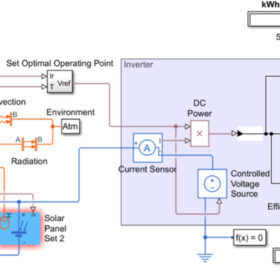New kesterite solar cell design promises 29.37% efficiency
Researchers in China and Malaysia simulated a new structure for copper zinc tin sulphide (CZTS) cells featuring a tungsten oxide buffer layer and a back surface field kesterite layer. A device simulated with this configuration achieved an open circuit voltage of 1.2 V and a fill factor of 83.37%.
Sinovoltaics tracks 78.8 GW solar module capacity in Southeast Asia
The latest supply chain map from Sinovoltaics tracks growth across Southeast Asia, with module capacity reaching 78.8 GW, and 58 production projects tracked.
The Hydrogen Stream: 20 GW of electrolysis project reached final investment decision
The IEA published its yearly hydrogen analysis reporting that of the 520 GW announced electrolysis projects, 20 GW reached final investment decision, with China leading the way.
Preliminary decision announced on U.S. solar cell imports
The preliminary decision on countervailing duties on cells from companies in Vietnam, Cambodia, Malaysia and Thailand are lower than some expected for several major Chinese producers.
97 MW Matarani plant begins operation in Peru
Acquired by Yinson Renewables earlier this year, the project is expected to reach an annual production capacity of 260 GWh.
Malaysian scheme lets businesses buy on-grid renewables from developers
A new initiative now allows businesses in Malaysia to purchase green electricity directly from renewable energy developers through the national grid. The country’s Ministry of Energy Transition and Water Transformation (PETRA) estimates that it will generate more than MYR 10 billion ($2.4 billion) in direct investments.
Malaysia reaches 350 MW residential solar quota for net metering
Malaysia’s Sustainable Energy Development Authority reports that the 350 MW capacity allocated for residential solar under the net metering initiative has been reached. However, capacity remains available for government buildings, as well as commercial and industrial users under the same scheme.
Malaysia’s Solarvest signs 59.98 MW of solar deals
Solarvest has signed five separate corporate green power agreements (CGPAs) in Malaysia through two joint ventures.
Over 667 net metering consumers received solar rebates in Malaysia
Figures from Malaysia’s Ministry of Energy Transition and Water Transformation state at least 667 net metering consumers have benefitted from the country’s solar rebate programme since its inception in April. The majority have received the maximum MYR 4,000 ($875.61) available.
New model to identify optimal power sizing ratio for solar inverters
Researchers in Malaysia have proposed a new approach to identify the optimal power sizing ratio to balance PV energy capture with inverter costs. The calibrated model is said to accurately reflect the relationship between inverter efficiency and real-world system behavior.










